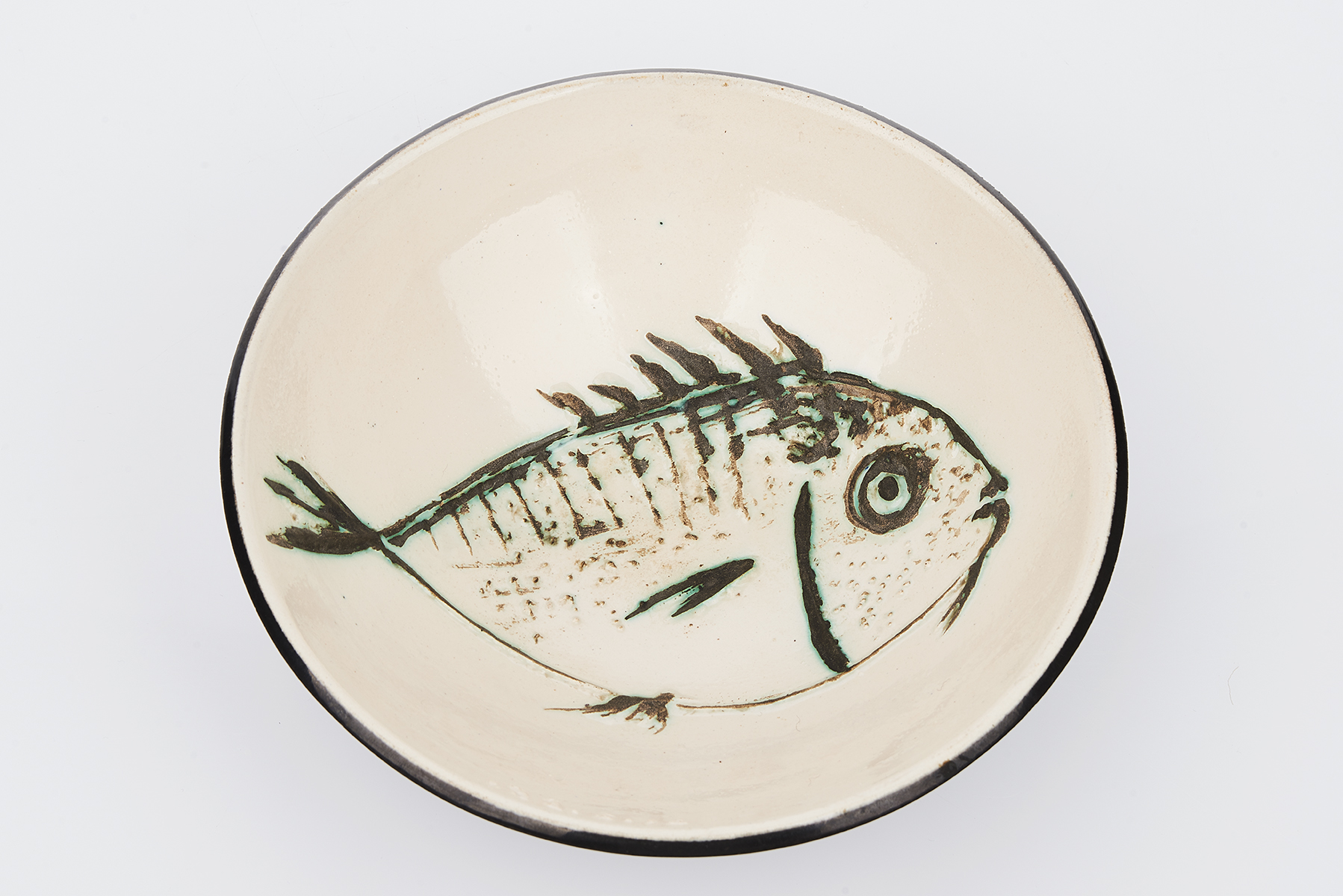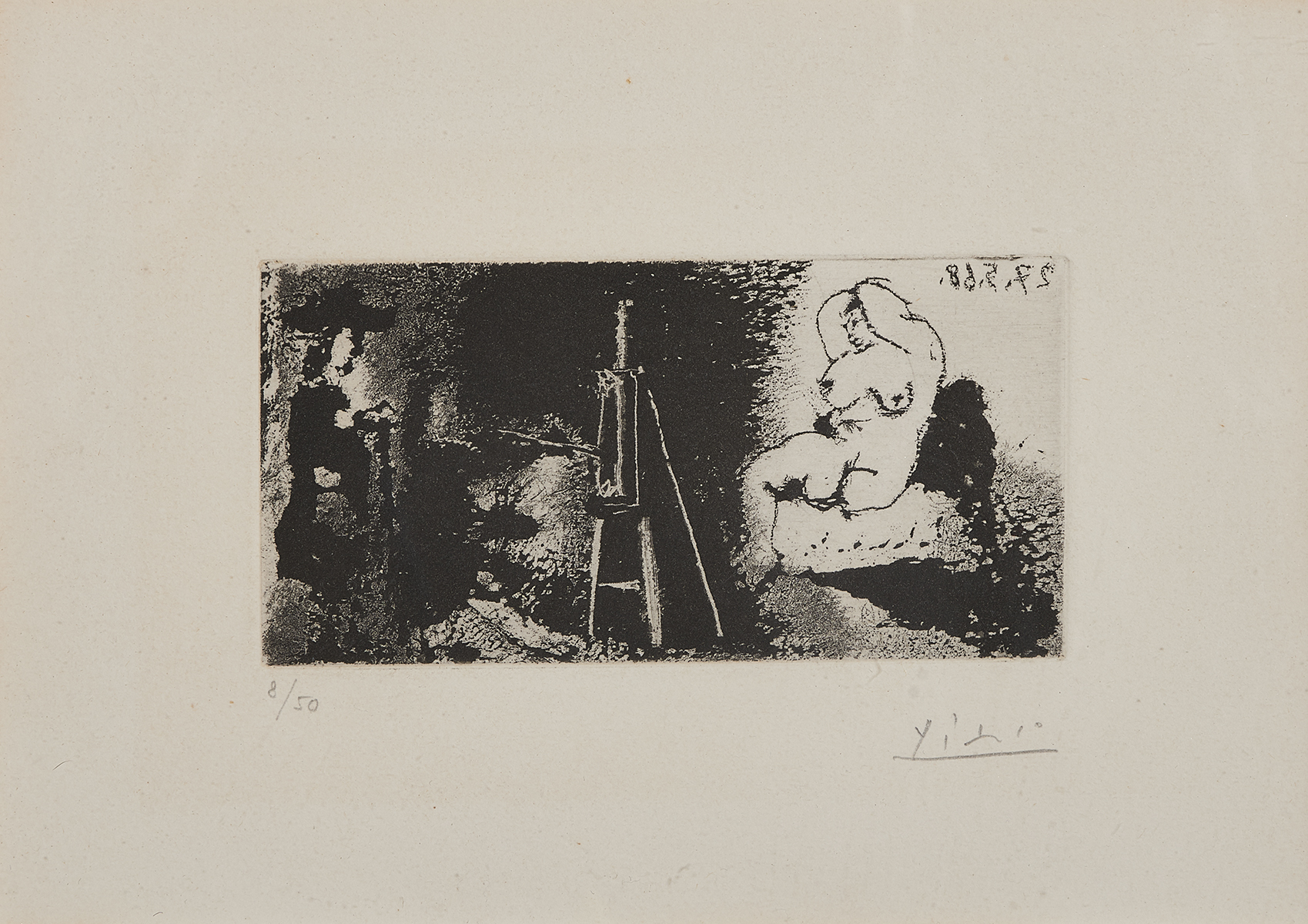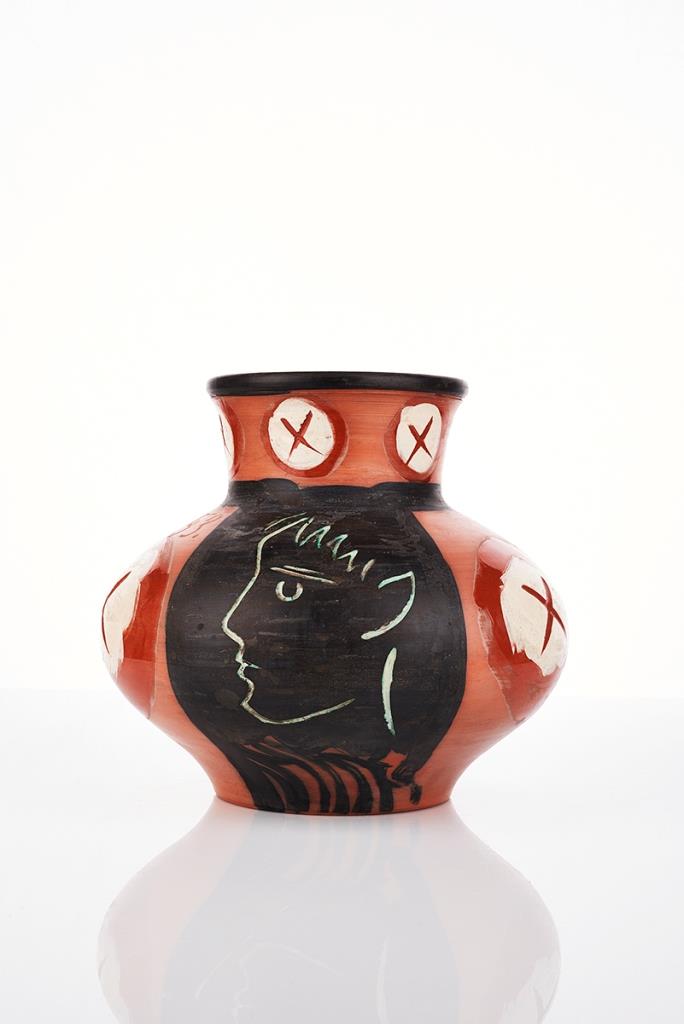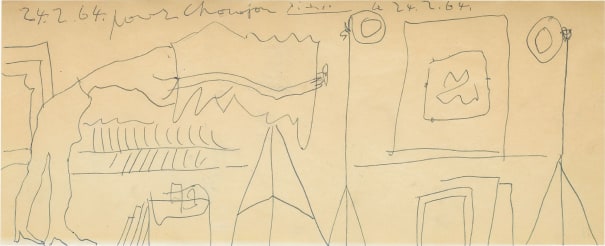PABLO PICASSO (spanish, 1881-1973) "PICASSO THEATRE" Signed, dated 'le 10.11.67' and dedicated 'pour mon cher ami Feld' center and titled right, India ink, wash and chalk on paper. 11 11/16 x 21 1/4 in. (29.7 x 54cm) provenance: Sotheby's, New York, "Impressionist and Modern Art, Part II," November 9, 1995, lot 378. Private Collection, Massachusetts (acquired directly from the above sale). note: This lot is accompanied by a photo-certificate of authenticity from Claude Picasso, dated 10 Octobre 2016, as well as a boxed copy of the original book in French. At the early part of the twentieth century, Pablo Picasso collaborated with the Ballets Russes founder Sergei Diaghilev and choreographer Leonide Massine, lending his Cubist vision to the design of costumes, stage sets, and curtains for innovative productions that include Parade, Le Tricorne, and Pulcinella. Between 1917 and 1924-what have come to be known as his "Theater Years"- Picasso traveled from Paris to Barcelona, London, and Rome with Diaghilev, immersing himself fully in the world of the famous ballet company, even marrying dancer Olga Khokhlova in 1918. Picasso's long fascination with the theater and performers was not just limited to the ballet. His 1904 painting, The Actor, and the larger, Family of Saltimbanques from 1905, focus on the curious, though often bleak, world of circus performers. Picasso drew inspiration from the Cirque Medrano, a famous establishment in the Montmartre neighborhood of Paris where he lived and worked. His lifelong experimentation with the humanform found new media in his creations of ballet costumes and stage designs that, in turn, allowed Picasso to channel new perspectives and creativity into his later works. Picasso Theatre is a draft of the final design that illustrated the clothbound cover of the first edition book of the same name, originally published in 1968. A second printing in 1987 used a different cover design, and did not include a clear acetate cover wrap emblazoned with the title. The book, prepared by British art historian Douglas Cooper and dedicated to the artist, is a collection of images of Picasso's lesser-known works for the theater, specifically the ballet, as well as an essay on the significant influence the theater had on the artist's oeuvre. An exhibition of items from Picasso's theater years was staged at the Palazzo Grassi in Venice in 1998, and several pieces, including the curtain from the 1924 ballet, Mercure, are in the collection of the Centre Pompidou in Paris. According to the Picasso Authentification Committee, also in Paris, which provided authentication for Picasso Theatre, other drafts the artist created for the cover are held in the collection of the Musee d'art et d'histoire de Saint-Denis. An India ink, wash and chalk work on paper, Picasso Theatre is signed, dated, and dedicated on what the artist intended to be the spine of the book-the center strip that separates two haunting and expressive drawings.
PABLO PICASSO (spanish, 1881-1973) "PICASSO THEATRE" Signed, dated 'le 10.11.67' and dedicated 'pour mon cher ami Feld' center and titled right, India ink, wash and chalk on paper. 11 11/16 x 21 1/4 in. (29.7 x 54cm) provenance: Sotheby's, New York, "Impressionist and Modern Art, Part II," November 9, 1995, lot 378. Private Collection, Massachusetts (acquired directly from the above sale). note: This lot is accompanied by a photo-certificate of authenticity from Claude Picasso, dated 10 Octobre 2016, as well as a boxed copy of the original book in French. At the early part of the twentieth century, Pablo Picasso collaborated with the Ballets Russes founder Sergei Diaghilev and choreographer Leonide Massine, lending his Cubist vision to the design of costumes, stage sets, and curtains for innovative productions that include Parade, Le Tricorne, and Pulcinella. Between 1917 and 1924-what have come to be known as his "Theater Years"- Picasso traveled from Paris to Barcelona, London, and Rome with Diaghilev, immersing himself fully in the world of the famous ballet company, even marrying dancer Olga Khokhlova in 1918. Picasso's long fascination with the theater and performers was not just limited to the ballet. His 1904 painting, The Actor, and the larger, Family of Saltimbanques from 1905, focus on the curious, though often bleak, world of circus performers. Picasso drew inspiration from the Cirque Medrano, a famous establishment in the Montmartre neighborhood of Paris where he lived and worked. His lifelong experimentation with the humanform found new media in his creations of ballet costumes and stage designs that, in turn, allowed Picasso to channel new perspectives and creativity into his later works. Picasso Theatre is a draft of the final design that illustrated the clothbound cover of the first edition book of the same name, originally published in 1968. A second printing in 1987 used a different cover design, and did not include a clear acetate cover wrap emblazoned with the title. The book, prepared by British art historian Douglas Cooper and dedicated to the artist, is a collection of images of Picasso's lesser-known works for the theater, specifically the ballet, as well as an essay on the significant influence the theater had on the artist's oeuvre. An exhibition of items from Picasso's theater years was staged at the Palazzo Grassi in Venice in 1998, and several pieces, including the curtain from the 1924 ballet, Mercure, are in the collection of the Centre Pompidou in Paris. According to the Picasso Authentification Committee, also in Paris, which provided authentication for Picasso Theatre, other drafts the artist created for the cover are held in the collection of the Musee d'art et d'histoire de Saint-Denis. An India ink, wash and chalk work on paper, Picasso Theatre is signed, dated, and dedicated on what the artist intended to be the spine of the book-the center strip that separates two haunting and expressive drawings.















Try LotSearch and its premium features for 7 days - without any costs!
Be notified automatically about new items in upcoming auctions.
Create an alert